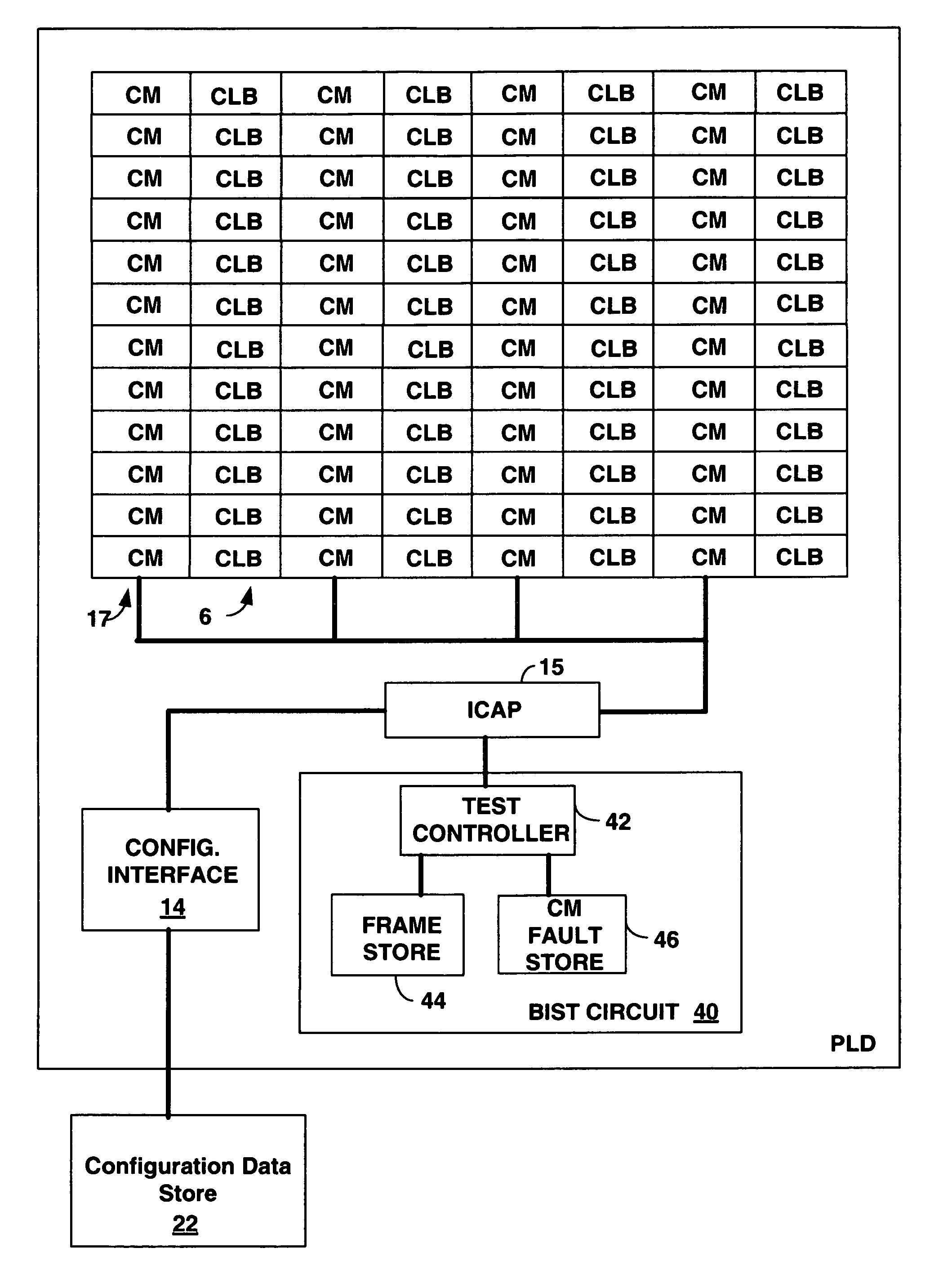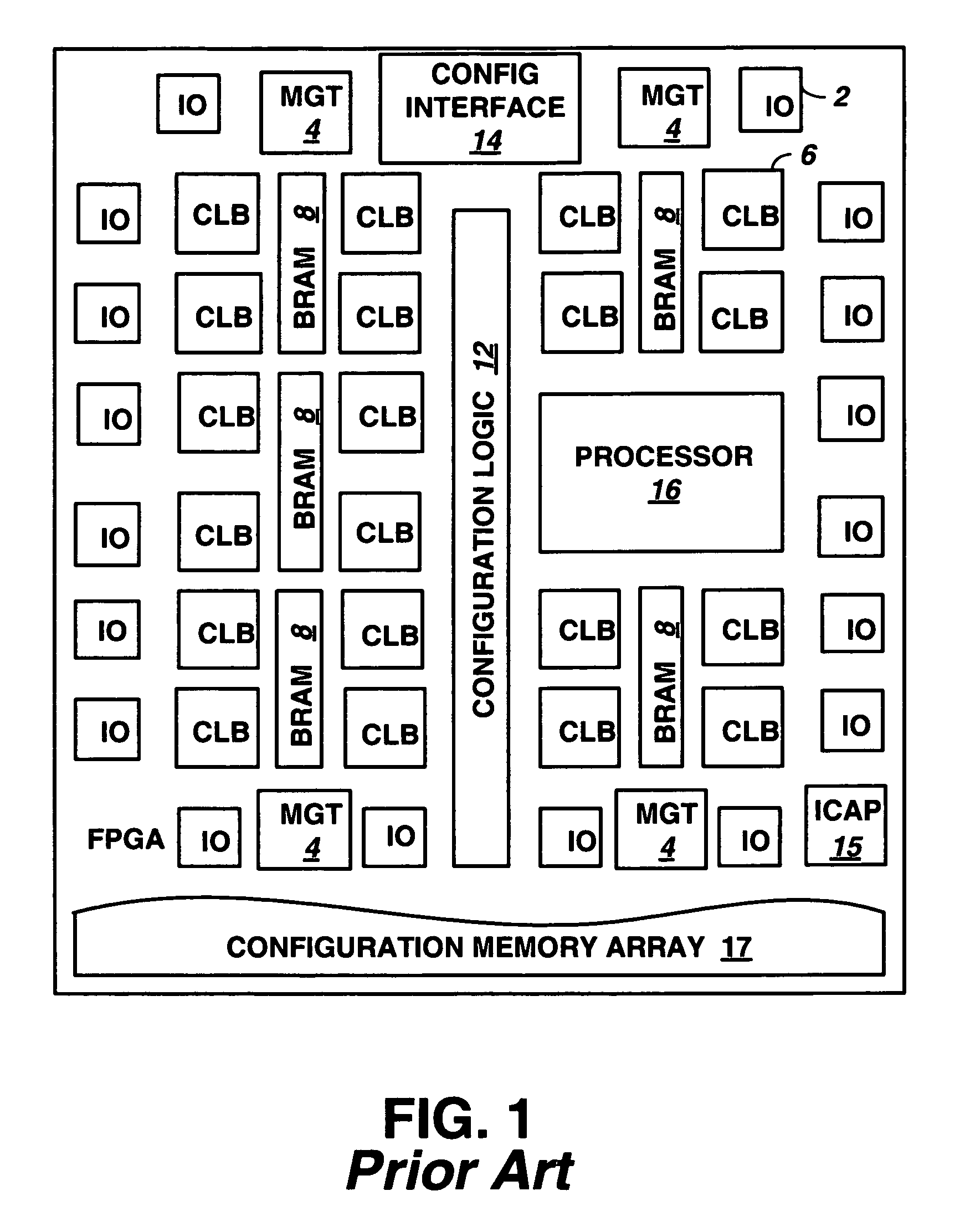Total configuration memory cell validation built in self test (BIST) circuit
a self-testing, total configuration technology, applied in the direction of instruments, computation using denominational number representation, pulse technique, etc., can solve the problems of reducing the mean time to failure resulting from seus, more prone to errors in configuration memory, and increasing the probability of collisions between on-chip memory cells and cosmic particles
- Summary
- Abstract
- Description
- Claims
- Application Information
AI Technical Summary
Benefits of technology
Problems solved by technology
Method used
Image
Examples
Embodiment Construction
[0021]Embodiments of the present invention provide for testing the configuration memory for faults by taking advantage of partial configuration. The Virtex-4 FPGA manufactured by Xilinx, Inc. of San Jose, Calif., includes an ICAP providing for partial configuration on a frame by frame basis. Efficient partial reconfiguration of an FPGA is performed by only reading and rewriting a portion of the frames or columns in the configuration memory array at a time. Efficient operation can result using partial reconfiguration for a BIST circuit because storage of only a frame of the configuration memory is required at one time.
[0022]FIG. 2 shows one configuration of circuitry used to enable efficient partial reconfiguration using an ICAP, such as in the Virtex-4 FPGA. To control reading and writing of data into the configuration memory array 17, a controller 20 is used. The controller 20 can be included with the ICAP 15 internal to the FPGA. Alternatively, the controller 20 may be a separate ...
PUM
 Login to View More
Login to View More Abstract
Description
Claims
Application Information
 Login to View More
Login to View More - R&D
- Intellectual Property
- Life Sciences
- Materials
- Tech Scout
- Unparalleled Data Quality
- Higher Quality Content
- 60% Fewer Hallucinations
Browse by: Latest US Patents, China's latest patents, Technical Efficacy Thesaurus, Application Domain, Technology Topic, Popular Technical Reports.
© 2025 PatSnap. All rights reserved.Legal|Privacy policy|Modern Slavery Act Transparency Statement|Sitemap|About US| Contact US: help@patsnap.com



